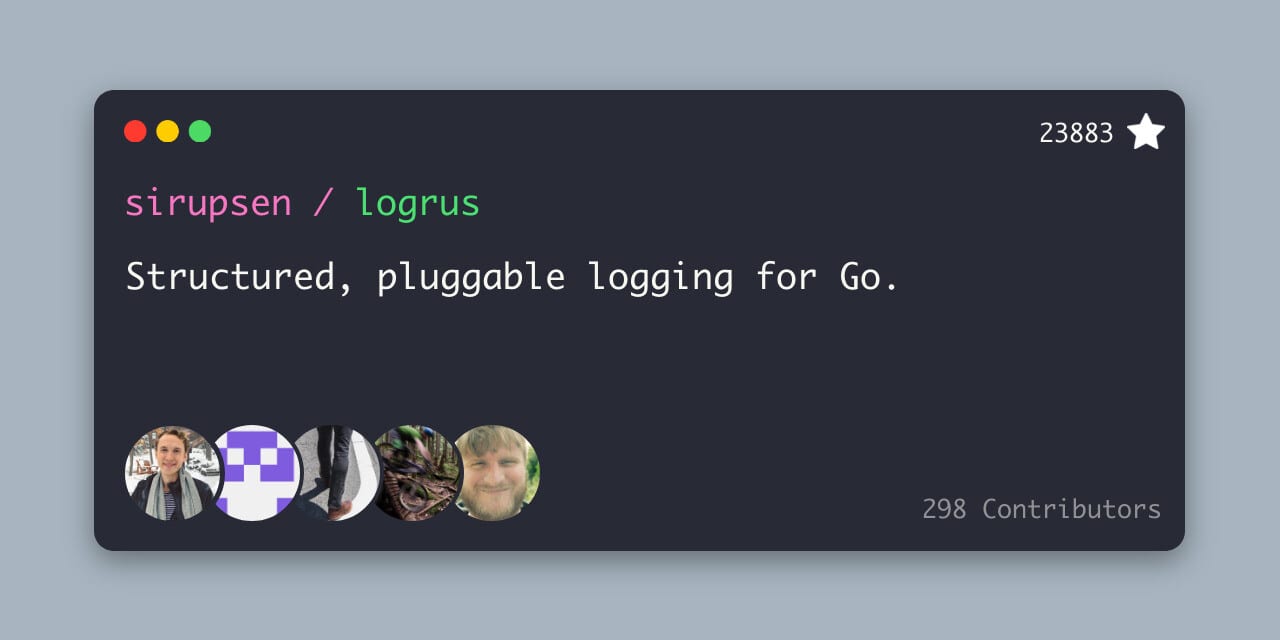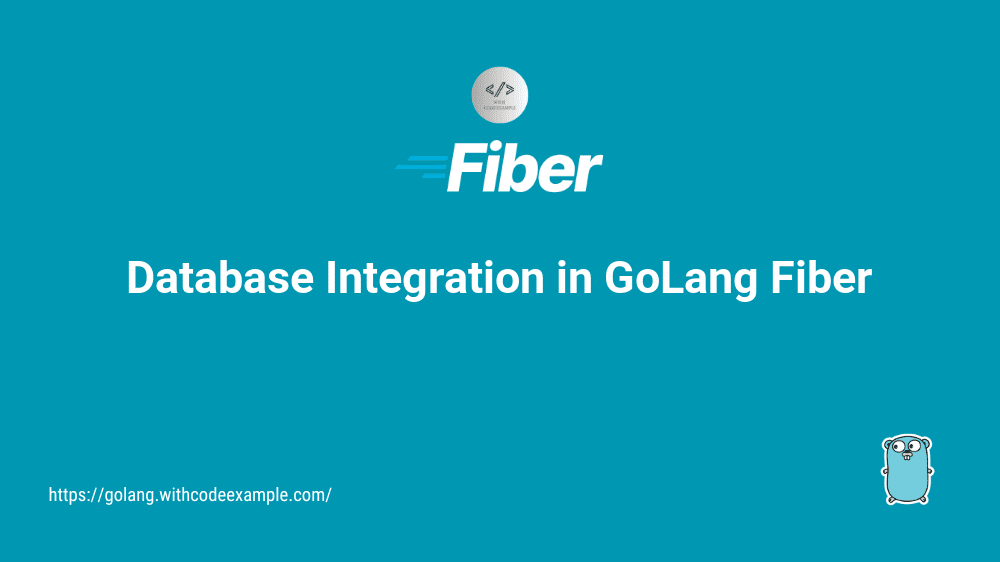Patterns for Effective Concurrency in Go
- With Code Example
- October 3, 2023
Designing Efficient and Reliable Concurrent Systems
Series - Concurrency In Go
- 1: The Power of Concurrency in Go
- 2: Understanding Goroutines in Go Language
- 3: Working with Channels and Patterns
- 4: Managing Shared Resources with Mutex
- 5: Synchronization Primitives in the sync Package
- 6: Challenges of Error Handling in Concurrent Code
- 7: Patterns for Effective Concurrency in Go
- 8: Performance Considerations and Optimization in Go
In this age of advanced software programming, it is important to use parallelism for better results. With the increasing complexity of applications and demands for data processing, there’s a need for coders to write efficient and reliable concurrent programs. To tackle this problem, designers have come up with templates and methods that help in the design and management of concurrent systems. In this article we will take a look at 5 basic concurrency patterns in Go that should be known: distinguishing between parallelism and concurrency, breaking down tasks, using worker pools, cancellation and context, and testing concurrent code.

Table of Contents
Parallelism vs. Concurrency
Before we dive into the intricacies of concurrency patterns, it’s crucial to grasp the fundamental distinction between parallelism and concurrency.
Parallelism
Parallelism involves the simultaneous execution of multiple tasks, usually with the primary objective of enhancing performance by harnessing the capabilities of multiple processor cores. In a true parallelism scenario, tasks execute concurrently without the need for synchronization or coordination between them. Parallelism is commonly employed for compute-intensive tasks like scientific simulations, rendering, and data processing.
Concurrency
Concurrency, on the other hand, is a broader concept. It refers to a system’s capability to oversee and execute multiple tasks that overlap in time. These tasks may not necessarily run in parallel but rather in an interleaved manner. Concurrency aims at efficiently utilizing resources, improving responsiveness, and handling tasks concurrently, even in situations where genuine parallelism isn’t achievable.
With this foundational understanding of parallelism and concurrency, let’s delve into practical patterns for achieving effective concurrency in Go.
Task Decomposition
Task decomposition is a fundamental pattern for designing concurrent systems. This pattern involves breaking down a complex task into smaller, more manageable sub-tasks that can be executed concurrently. This approach not only helps harness the full potential of your hardware but also enhances code modularity and maintainability.
The Need for Task Decomposition
Imagine a scenario where you need to process a massive dataset. Without task decomposition, you might opt to process each item in a sequential manner. However, this approach can be painfully slow, especially in the context of modern multi-core processors, which remain underutilized.
Parallelizing with Task Decomposition
Task decomposition allows you to divide the dataset into smaller chunks and process them concurrently. This strategy enables you to achieve parallelism and fully exploit your hardware resources. Let’s illustrate this concept with a straightforward Go example.
package main
import (
"fmt"
"sync"
)
func processItem(item int, wg *sync.WaitGroup, results chan int) {
defer wg.Done()
// Simulate item processing
// ...
// Send the result to the channel
results <- item * 2
}
func main() {
numItems := 100
numWorkers := 4
// Create a wait group to synchronize workers
var wg sync.WaitGroup
// Create a channel to collect results
results := make(chan int, numItems)
// Launch worker goroutines
for i := 0; i < numWorkers; i++ {
wg.Add(1)
go processItem(i, &wg, results)
}
// Close the results channel when all workers are done
go func() {
wg.Wait()
close(results)
}()
// Collect and process results
for result := range results {
fmt.Printf("Processed result: %d\n", result)
}
}
In this Go example, we utilize goroutines and channels to implement task decomposition. The processItem function simulates item processing, and each item is processed concurrently. By dividing the workload into smaller, parallelizable sub-tasks, we effectively exploit the benefits of concurrency.
Worker Pools
Worker pools are another vital concurrency pattern, especially when dealing with a substantial number of tasks that require concurrent execution. Rather than spawning a new goroutine for each task, worker pools maintain a fixed number of worker goroutines that process tasks from a queue. This pattern helps manage resource consumption and prevents overloading the system.
The Challenge of Unlimited Concurrency
Without a worker pool, you might be tempted to create a new goroutine for each task, especially when dealing with a large number of tasks. However, this approach can lead to resource exhaustion, increased context-switching overhead, and potential instability.
Implementing a Worker Pool in Go
Let’s examine a simplified Go example to illustrate the concept of a worker pool.
package main
import (
"fmt"
"sync"
)
type Task struct {
ID int
Result int
}
func worker(id int, tasks <-chan Task, results chan<- Task, wg *sync.WaitGroup) {
defer wg.Done()
for task := range tasks {
// Simulate task processing
// ...
// Store the result in the task
task.Result = task.ID * 2
// Send the updated task to the results channel
results <- task
}
}
func main() {
numTasks := 20
numWorkers := 4
// Create a wait group to synchronize workers
var wg sync.WaitGroup
// Create channels for tasks and results
tasks := make(chan Task, numTasks)
results := make(chan Task, numTasks)
// Launch worker goroutines
for i := 0; i < numWorkers; i++ {
wg.Add(1)
go worker(i, tasks, results, &wg)
}
// Generate tasks
for i := 0; i < numTasks; i++ {
tasks <- Task{ID: i}
}
// Close the tasks channel to signal that no more tasks will be added
close(tasks)
// Wait for all workers to finish
wg.Wait()
// Close the results channel
close(results)
// Collect and process results
for result := range results {
fmt.Printf("Processed result for task %d: %d\n", result.ID, result.Result)
}
}
In this Go example, we implement a worker pool using goroutines and channels. Worker goroutines concurrently process tasks from the tasks channel and send the results back to the results channel. By maintaining a fixed number of worker goroutines, we ensure that only a limited number of tasks are executed concurrently, thus preventing resource exhaustion.
Cancellation and Context
Cancellation and context management are crucial aspects of concurrent programming. When working with concurrent tasks, it’s essential to have mechanisms in place for canceling ongoing work or managing the context in which tasks are executed.
Context and Context Cancellation in Go
Go provides the context package, which allows you to carry deadlines, cancellations, and other request-scoped values across API boundaries and between processes. This package is particularly useful for managing the lifecycle of concurrent tasks.
Let’s take a look at an example of using context for cancellation:
package main
import (
"context"
"fmt"
"sync"
"time"
)
func worker(ctx context.Context, id int, wg *sync.WaitGroup) {
defer wg.Done()
select {
case <-ctx.Done():
fmt.Printf("Worker %d: Canceled\n", id)
return
case <-time.After(time.Second):
fmt.Printf("Worker %d: Done\n", id)
}
}
func main() {
numWorkers := 4
// Create a context with a cancellation function
ctx, cancel := context.WithCancel(context.Background
())
defer cancel() // Ensure cancellation when done
// Create a wait group to synchronize workers
var wg sync.WaitGroup
// Launch worker goroutines
for i := 0; i < numWorkers; i++ {
wg.Add(1)
go worker(ctx, i, &wg)
}
// Cancel the context after a brief delay
go func() {
time.Sleep(2 * time.Second)
cancel()
}()
// Wait for all workers to finish
wg.Wait()
}
In this Go example, we create a context with a cancellation function using context.WithCancel. We launch several worker goroutines, and each worker checks for cancellation using ctx.Done(). When the context is canceled (in this case, after a brief delay), the workers respond appropriately and exit.
Testing Concurrent Code
Testing concurrent code presents unique challenges. Ensuring that your concurrent code functions correctly and reliably is essential to avoid race conditions and other concurrency-related issues. Go provides tools and techniques for effectively testing concurrent code.
Testing Concurrent Code in Go
Go’s testing framework includes the testing package, which allows you to write unit tests for concurrent code. You can use the go test command to run these tests in parallel, which helps uncover race conditions and synchronization problems.
Let’s see an example of testing concurrent code in Go:
package main
import (
"sync"
"testing"
)
func ParallelFunction() int {
var wg sync.WaitGroup
var result int
numWorkers := 4
wg.Add(numWorkers)
for i := 0; i < numWorkers; i++ {
go func(id int) {
defer wg.Done()
result += id
}(i)
}
wg.Wait()
return result
}
func TestParallelFunction(t *testing.T) {
expected := 6 // Sum of integers from 0 to 3
result := ParallelFunction()
if result != expected {
t.Errorf("Expected %d, but got %d", expected, result)
}
}
In this Go example, we have a ParallelFunction that performs a parallel computation by launching multiple goroutines. We then have a unit test TestParallelFunction that checks whether the function behaves as expected.
To run the test, use the go test command, which automatically detects and runs tests in the current package.
go test
Conclusion
Concurrency is a potent tool for enhancing the performance and responsiveness of your software. It’s not merely about running tasks concurrently but also about doing so in a manner that is manageable, efficient, and reliable. Understanding the distinction between parallelism and concurrency is fundamental to making informed design decisions.
Task decomposition empowers you to break down complex tasks into smaller, parallelizable sub-tasks, maximizing resource utilization and code maintainability. Worker pools provide a structured approach to manage concurrent tasks efficiently, preventing resource overload and instability when dealing with a substantial task load.
Cancellation and context management are essential for gracefully handling concurrent tasks, allowing for cancellation and cleanup when needed. Go’s context package is a powerful tool for achieving this.
Testing concurrent code is critical to ensure the correctness of your implementations. Go’s testing framework and the ability to run tests in parallel assist in identifying and mitigating race conditions and other concurrency-related issues.
By incorporating these patterns into your Go programming toolkit, you can design and implement effective concurrent systems that fully leverage the capabilities of modern computing resources. Effective concurrency is not just a matter of doing more tasks simultaneously but also doing so with precision and control, ensuring the stability and robustness of your applications.





